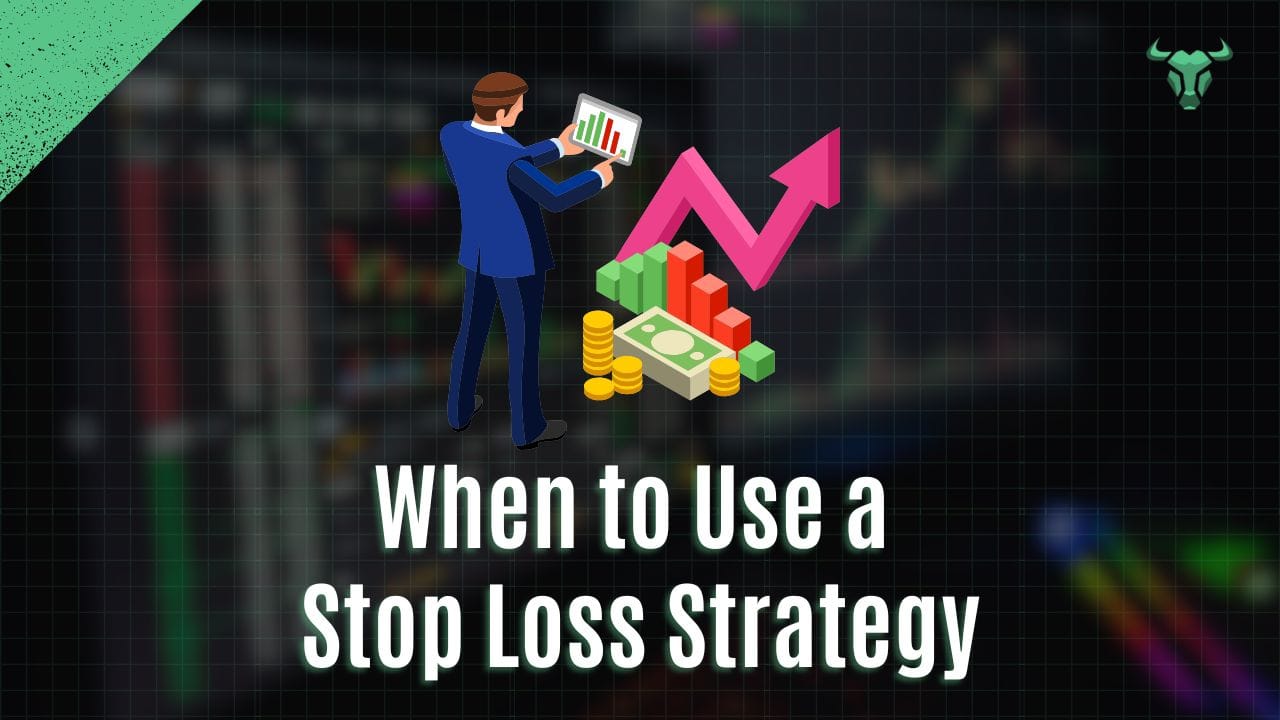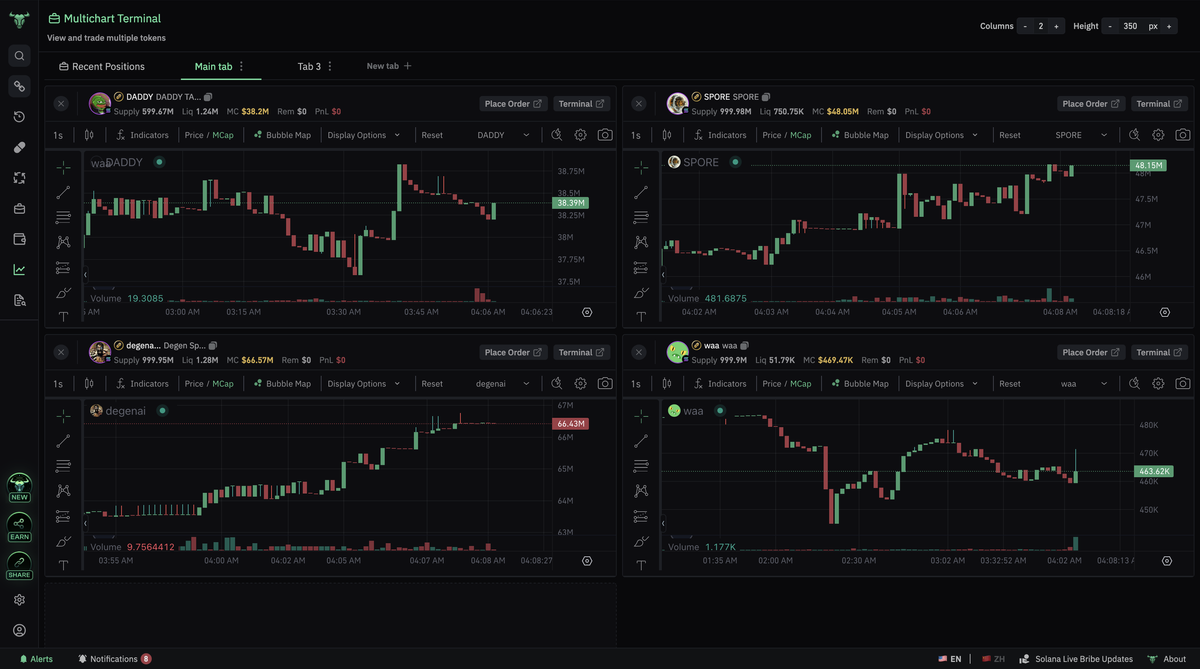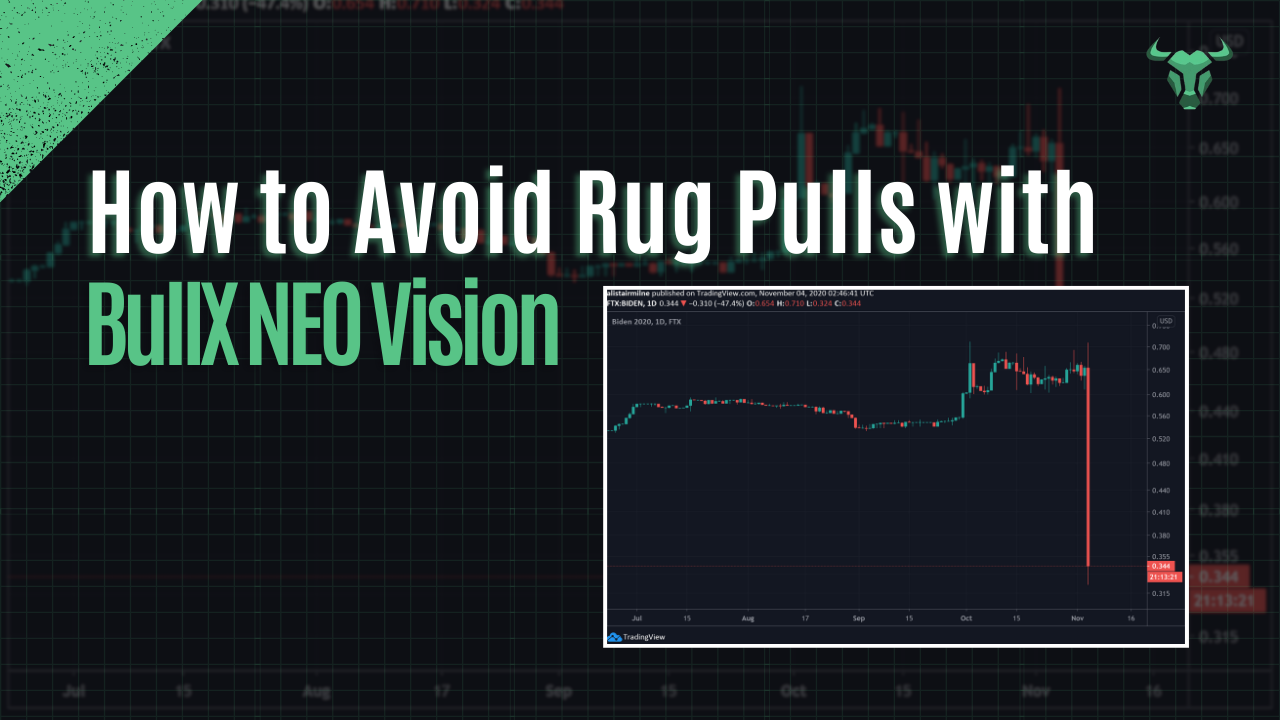Bull Market: When to Use a Stop Loss Strategy

Navigating Bull Market
So, you're in a bull market, things are looking up, and your investments are climbing. That's great! But what happens when the market takes a sudden turn? You don't want to lose all those gains you've worked hard for. That's where a stop loss strategy comes in handy, especially during a bull market. Let's talk about how you can use a stop loss bull market to your advantage, protect your profits, and keep your cool when things get a bit wild.
Key Takeaways
- A bull market means prices are generally going up, but even in these times, prices can drop suddenly.
- Using a stop loss helps you lock in profits and limit how much you could lose if the market turns.
- You can set a stop loss at a fixed price or have it trail your gains to protect more profit as the price goes up.
- It's important to adjust your stop loss as your investment grows or if the market conditions change.
- Be careful not to set your stop loss too tight, or you might get kicked out of a good investment by normal market ups and downs.
Understanding the Bull Market Environment

So, you're in a bull market. That means things are generally going up, and most people feel pretty good about their investments. It’s that time when the economy is usually doing well, and companies are making more money. You see prices climbing across the board, and there's a general sense of optimism. It’s not just a few stocks doing well; it’s a broad trend. Think of it as the tide lifting all boats, making it seem easier to make money in the market. This kind of environment can be really exciting, and it’s why people often talk about bull runs.
Characteristics of a Rising Market
What does a rising market actually look like? Well, for starters, stock prices are consistently climbing. This isn't just a day or two of gains; we're talking about sustained upward movement over weeks or months. The economy is typically strong, with low unemployment and growing businesses. Company profits are usually on the rise too, which gives investors confidence. You’ll often see major stock indexes like the S&P 500 hitting new highs. It’s a period where the general sentiment is positive, and people are more willing to invest, expecting those gains to continue. It’s a good time to be invested, but it also means you need to be smart about how you manage your money. Tools like the bullx neo trading bot can help you stay on track during these times.
Investor Sentiment During Bull Runs
During a bull run, investor sentiment is usually sky-high. People feel confident, maybe even a little too confident. They see prices going up and expect them to keep going up. This optimism can lead to more people jumping into the market, sometimes without doing as much research as they should. FOMO, or the fear of missing out, can be a big driver. Everyone seems to be making money, so you want to get in on it too. This positive feeling is a hallmark of a bull market, but it’s also important to remember that markets don't go up forever. Keeping a level head is key, even when everyone around you is excited. You can get access to tools that help manage this sentiment, like the bullx neo telegram bot, which can automate some of your trading decisions.
The Role of Stop Losses in Bull Markets
Even when the market is going up, things can get a little bumpy. That's where stop losses come in handy. They're not just for when the market's tanking; they're pretty useful when prices are climbing too.
Protecting Gains in Volatile Conditions
Think of a bull market like a fast-moving train. You're making good progress, but there's always a chance of a sudden jolt. A stop loss order acts like a safety belt. If the price of your investment suddenly drops, even a little, your stop loss can automatically sell it. This helps you lock in some of the profits you've already made, preventing a quick reversal from wiping out your gains. It’s a way to take some of the emotion out of trading, letting your plan handle the selling when conditions get shaky. Tools like BullX NEO can help you set these up automatically.
Managing Risk Amidst Upward Trends
It might seem counterintuitive, but managing risk is just as important when prices are rising. You don't want to get too comfortable and forget that markets can change direction. Using stop losses helps you define how much you're willing to lose on a trade, even in a bull run. This disciplined approach means you're not just riding the wave blindly. It's about having a plan for when things don't go as expected, which is a key part of effective crypto trading.
In a bull market, the temptation is to let your winners run without much thought. However, a well-placed stop loss can be the difference between securing a solid profit and watching that profit evaporate. It's a proactive measure to safeguard your capital against unexpected downturns or sharp corrections that can happen even in the most robust upward trends.
Here’s a quick look at why they matter:
- Preserves Profits: Stops help you hold onto gains when prices pull back.
- Reduces Emotional Decisions: Automating exits removes the stress of watching charts constantly.
- Defines Risk: You know your maximum potential loss on a trade beforehand.
These orders are a core part of any strategy, whether you're dealing with stocks or cryptocurrency bull markets. They are essential tools for profiting in both bull and bear markets.
Implementing a Stop Loss Strategy
So, you're in a bull market, and things are looking good. But even when the market is climbing, it's smart to have a plan for when things might turn. That's where stop losses come in. They're basically your safety net, designed to automatically sell your holdings if the price drops to a certain point. This helps protect the gains you've already made and keeps your overall risk in check. Think of it like this: you're enjoying a nice hike uphill, but you've also got a sturdy rope ready in case you slip.
Setting Appropriate Stop Loss Levels
Figuring out where to set your stop loss is key. You don't want it so tight that a little bit of normal market fluctuation triggers a sale, but you also don't want it so wide that you give back a ton of your profits if the market suddenly dips. A common approach is to set it below a recent support level. For example, if you bought a stock at $50 and it's been trading in a range, you might set your stop loss just below the lowest point of that range. This gives the stock some room to breathe without automatically selling you out. It's about finding that balance between protecting your capital and letting your investment grow.
Trailing Stop Losses for Growth
Now, when you're in a bull market, you want your stop losses to move with your profits. That's where trailing stop losses shine. Instead of a fixed price, a trailing stop loss is set at a percentage or dollar amount below the current market price. As the price goes up, your stop loss automatically adjusts higher, locking in more of your gains. If the price falls, the stop loss stays put. This is a great way to ride a strong upward trend without having to constantly monitor and manually adjust your stop. Tools like the BullX NEO bot can help automate this process, making it easier to manage your trades as your positions grow.
It's important to remember that stop losses aren't foolproof. In very fast-moving markets, a price can gap down, meaning it might open significantly lower than the previous day's close, potentially skipping your stop loss price entirely. This is just something to be aware of.
Here’s a simple way to think about setting your initial stop loss:
- Consider recent price action: Look at the last few days or weeks. Where has the price found support?
- Factor in volatility: How much does the price typically swing? More volatile assets might need wider stops.
- Align with your risk tolerance: How much are you comfortable losing on this specific trade?
Using a tool like BullX NEO can simplify setting these parameters, allowing you to automate your strategy and focus on the bigger picture. You can configure your stop-loss and take-profit levels directly within the bot, helping you manage risk effectively. This is especially useful when you're trying to profit from Solana's price movements.
When to Adjust Your Stop Loss
So, you've got your stop losses set, which is great. But in a bull market, things move fast, and what was a good stop yesterday might not be today. You've got to be ready to tweak those levels to keep up.
Responding to Market Shifts
Markets aren't static, especially when they're climbing. A sudden dip might just be a temporary pause, not a trend reversal. If your stop loss gets triggered on a minor pullback, you could miss out on a lot more gains. It’s about figuring out if that dip is just noise or the start of something bigger. For instance, if you're using a tool like BullX NEO to track whale movements, and a whale you're following makes a small dip but then continues its upward trajectory, you might want to reconsider that stop loss. Don't let short-term volatility shake you out of a good position. You need to watch the overall trend and not just react to every little wiggle. Sometimes, a quick adjustment to your stop loss, maybe moving it up a bit but not too much, can save your trade.
Revising Stops as Positions Grow
As your investment grows, so should your protection. When a trade moves into a profitable territory, it’s smart to protect those gains. A common move is to bring your stop loss up to your entry point, or even better, to a level that locks in a certain percentage of profit. This way, even if the market turns, you won't lose money on the trade. Think about it: if you bought a stock at $10 and it’s now at $20, your initial stop loss at $9 probably isn't doing much for you anymore. You might want to move it up to, say, $15 to secure those profits. This is where you can really benefit from strategies that help you manage market volatility. It’s a way to make sure that as your position grows, your downside protection grows with it, keeping more of your hard-earned profits safe.
Common Pitfalls with Stop Losses
Avoiding Premature Exits
It’s easy to get spooked in a bull market. Prices can jump around a bit, even when the overall trend is up. If you set your stop-loss too tight, you might get kicked out of a winning trade just before it makes another big move. This is a classic mistake. You see your profit shrink for a moment, panic, and hit that sell button, only to watch the stock shoot up afterward. It’s like getting off a roller coaster just before the best drop. You want to protect your gains, sure, but not at the cost of missing out on more upside. Think about using something like BullX NEO to help you track trends and maybe set wider stops that give your trades room to breathe.
The Impact of Market Noise
Markets aren't always smooth sailing, even when they're going up. There’s a lot of what we call 'market noise' – small, short-term price swings that don't really change the bigger picture. If your stop-loss is too sensitive to this noise, you'll get stopped out unnecessarily. This is especially true for volatile assets. You might be tempted to constantly adjust your stops based on every little tick, but that’s usually a bad idea. It’s better to have a strategy that accounts for this natural choppiness. Remember, the goal is to avoid getting shaken out by temporary dips, not to avoid any price movement at all. It’s important to understand these common mistakes to avoid significant losses.
Advanced Stop Loss Techniques
So, you've got your basic stop losses in place, but what if you want to get a bit more sophisticated, especially when things are moving fast? That's where these advanced methods come in. They're designed to help you stay in the game while still keeping an eye on your downside.
Percentage-Based Stops
This is pretty straightforward. Instead of picking a fixed dollar amount, you set your stop loss at a certain percentage below your entry price or the current market price. For example, you might set a 10% stop loss. If you bought a stock at $100, your stop would be at $90. If the price climbs to $120, your 10% stop would now be at $108. It scales with your position.
Volatility-Adjusted Stops
This is where things get interesting. Markets aren't always smooth sailing, even in a bull run. Sometimes there's a lot of choppiness, or noise, that can trigger a regular stop loss prematurely. Volatility-adjusted stops try to account for this. One way to do this is using the Average True Range (ATR). ATR measures how much an asset's price has moved over a given period. You can set your stop loss a multiple of the ATR away from the current price. This means your stop will be wider in more volatile markets and tighter when things are calmer. It helps prevent getting shaken out by normal market fluctuations. Tools like BullX NEO can help you track these kinds of indicators to manage your trades more effectively, especially with meme coins where volatility is a given. You can use it to get early access to promising coins and manage your risk.
Remember, the goal of any stop loss is to protect your capital and lock in profits. It's not about predicting the exact top, but about having a plan to exit before a significant downturn erodes your gains. Think of it as a safety net that adjusts as you climb higher.
Here's a quick look at how you might set them:
- Percentage Stop: Set at a fixed percentage (e.g., 5%, 10%, 15%) below the current price.
- ATR Stop: Set at a multiple of the Average True Range (e.g., 1.5x ATR, 2x ATR) below the current price.
- Trailing Stop (mentioned earlier, but worth reiterating): Moves with the price, locking in gains as the market rises.
When you're looking at different trading strategies, understanding how these stops work can make a big difference. For instance, the Bull Flag Chart Pattern Strategy often involves using stops to manage risk during continuation patterns. It's all about having a disciplined approach to trading, whether you're using a bot or trading manually. Trading bots, for example, rely heavily on programmed risk management protocols like stop-loss orders to protect capital. They use real-time data to make rapid decisions, ensuring consistent execution of trading ideas. This is key to capitalizing on sustained price movements in a bull market. You can find more information on how to trade effectively in a bull market to get a better grasp of these concepts.
When you're trading, it's smart to have a plan for when things go wrong. Advanced stop loss techniques can help protect your money. These methods go beyond just setting a single price. They can help you stay in a trade longer while still limiting your risk. Want to learn more about these smart ways to trade? Visit our website to discover how to use advanced stop loss strategies and keep your trading safe.
Conclusion
So, you've looked at how stop losses can help you in a rising market. It's not about predicting the future, but about having a plan. You set a price, and if the market hits it, you sell. This can stop bigger losses if things turn around quickly. Think of it as a safety net. You might miss out on some extra gains if the price keeps going up after your stop loss triggers, but you also avoid a much bigger fall. It’s a trade-off. Whether you use them or not, and how you set them, depends on your own comfort with risk and your trading style. Keep learning and adjust as you go.
Frequently Asked Questions
What exactly is a bull market?
Think of a bull market like a party where prices are mostly going up! It's when the stock market is generally feeling optimistic, and most investors are buying, which pushes prices higher. It's a good time for your investments to grow, but sometimes things can get a little wild.
How does a stop loss help me in a bull market?
A stop loss is like a safety net for your investments. You set a price, and if your investment drops to that price, it automatically sells. This helps you avoid losing too much money if the market suddenly takes a dive, even when things are mostly going up.
How do I pick the right stop loss price?
You want to set your stop loss at a price that's a bit lower than where your investment is currently at. It shouldn't be too close, or you might sell too early if prices just wobble a little. But you also don't want it too far down, or you won't protect your money effectively.
What's a trailing stop loss and why is it useful?
A trailing stop loss is a smarter way to protect your gains. Instead of a fixed price, it moves up with your investment. So, if your investment goes up, your stop loss price also goes up, locking in more of your profits. If it suddenly drops, your trailing stop loss will trigger.
What's the danger of setting my stop loss too close?
Sometimes, prices can jump around a bit even in a good market. This is called 'market noise.' If your stop loss is too tight, you might get kicked out of a good investment just because of a small, temporary dip, missing out on future gains.
When should I change my stop loss amount?
You should definitely check your stop losses when the market changes a lot, or when your investment has grown significantly. Think of it like adjusting your seatbelt if you're going faster or taking a sharper turn. You want to make sure your safety net is still doing its job well.
More BullX NEO Guides:










